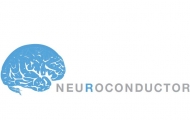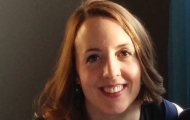E-Newsletters: Spring 2017
SPRING 2017
New & Notable
Groundbreaking Development

DEVELOPED IN-HOUSE BY JOHN MUSCHELLI, ADRIAN GHERMAN, CIPRIAN CRAINICEANU AND BRIAN CAFFO, NEUROCONDUCTOR IS AN OPEN-SOURCE PLATFORM DESIGNED FOR RAPID TESTING AND DISSEMINATION OF REPRODUCIBLE COMPUTATIONAL IMAGING SOFTWARE.
The goals of the project are to:
● provide a centralized repository of R software dedicated to image analysis;
● disseminate quickly software updates;
● educate a large, diverse community of scientists using detailed tutorials and short courses;
● ensure quality via automatic and manual quality controls; and
● promote reproducibility of image data analysis.
Based on the programming language R, Neuroconductor starts with 40 inter-operable packages that cover multiple areas of imaging including visualization, data processing and storage, and statistical inference. Neuroconductor accepts new R package submissions, which are subject to a formal review and continuous automated testing.
Neuroconductor also provides data packages, as well as packages designed to download data from online imaging repositories such as the Human Connectome Project (https://www.humanconnectome.org/). Along with all the other capabilities of R, Neuroconductor can be integrated with Shiny applications, reproducible reports, and journal articles. Neuroconductor is heavily influenced by the Bioconductor platform, though Neuroconductor was built later and takes advantage of new tools that were not available when Bioconductor was started. More precisely, the framework builds upon open source projects using git for version control, GitHub for package distribution, the devtools R package for package installation from GitHub, and Travis CI and Appveyor continuous integration services for checking packages and building binary packages for distribution on GitHub. The image below provides an overall view of the Neuroconductor structure.
Currently, there are tutorials for structural brain image analysis and the goal is to expand these tutorials into different imaging areas, with focus on functional magnetic resonance imaging (fMRI) and structural imaging of areas of the body other than the brain.
Neuroconductor (https://neuroconductor.org/) was developed in the Johns Hopkins Department of Biostatistics by Lead R Project Expert, John Muschelli, Lead Software Engineer, Adrian Gherman and Principal Investigators, Ciprian Crainiceanu and Brian Caffo.
Departmental News
Biostat Dazzles on the Silver Screen

IN CELEBRATION OF THE DEPARTMENT’S UPCOMING CENTENNIAL, A TEAM OF TWO FACULTY AND A STAFF-CINEMATOGRAPHER CREATED MOVIE MAGIC! CINEMATOGRAPHER, JESSICA CROWELL GIVES US A PERSONAL LOOK BEHIND THE SCENES:
In creating this film, Brian, Roger, and I hoped to illuminate the history, traditions and culture of Biostatistics and how these elements helped shape the department into what it stands as today – nearly 100 years later and developing more and more each day. I particularly enjoyed spending time with the interviewees who, through their dedication and success, have all been such an integral part of the department and the world of public health. I also appreciated having the opportunity to look through historic photographs and to learn about past members of the faculty. In fact, many of the older photos shown in the film were from Helen Abbey’s personal collection that practically spanned the entirety of her professional career in the department.
One of the highlights during production was the organization of a revival of the Department’s beloved game of Kriegspiel (“blind chess”) as both a film-op and as a celebration of the School’s centennial year. It was wonderful to see everyone together, taking part in a forgotten sport of the Biostatistics department; I feel it was one of the moments in the film that really showed the true and positive nature of the people here.
After a year and a half of working on this production, our biggest challenge came in the editing room when deciding how best to chisel down nearly 30 hours of footage into a 30-minute documentary! I had only joined the department several months prior to beginning this project, so my perspective was much different than that of the faculty I was working with; however, I feel that the collaboration between my background in film and Roger’s and Brian’s foundation of knowledge and experience here allowed us to sculpt the best story. I am grateful to have had the opportunity to work on this film to help represent and celebrate such a unique and charismatic department. There could not have been a more perfect way to enter into this community and find my place here.
Save the Date! Biostatistics Centennial Symposium & Dinner Celebration - July 29, 2017
View the full-length video here
Alumni Spotlight
Profiling Biostat Alum, Amanda Mejia

AMANDA MEJIA (PHD ‘16) IS THE LATEST FEATURED PROFILE ON OUR ALUMNI PAGE! SHE TAKES A MOMENT TO REFLECT ON HER TIME AT HOPKINS AND LIFE AFTER GRADUATION.
Amanda Mejia is an Assistant Professor in the Department of Statistics and a member of the Program in Neuroscience at Indiana University. Her primary research interest is on the development of statistical methods for neuroimaging data, with a focus on functional magnetic resonance imaging. She obtained her PhD from the Department of Biostatistics at Johns Hopkins Bloomberg School of Public Health in 2016, where she was co-advised by Martin Lindquist and Brian Caffo.
How did you get interested in the field of biostatistics? What was your background before enrolling at Hopkins?
I am an engineer by training, so I have always loved solving problems, but I also wanted to make a positive impact on society in some way. During my Masters studies in industrial engineering, I became very interested in both data analytics and public health. It quickly became clear to me that biostatistics was the perfect meeting of these two, so applied to PhD programs and have never looked back.
How did Johns Hopkins Biostatistics prepare you for your career? What aspects of the program did you find most useful?
Hopkins Biostatistics trained me to be a statistician while remaining focused on the end goal of solving problems and contributing to science. As a student, you work directly with scientific collaborators, attend conferences, meet with seminar speakers, etc. That kind of experience is important for becoming an independent researcher, academic or otherwise.
What are your favorite memories of your time at Johns Hopkins Biostatistics?
The department does so much as a community, and that includes students. It’s hard to imagine a more inclusive and social academic environment. From the weekly tea time and impromptu coffee breaks, to events like the chili party, holiday party, cultural mixer and departmental retreat, to thesis defense celebrations, there are so many opportunities to come together, have fun, and connect with each other.
The full interview can be found on the Featured Alumni page of our website.
News Flash
Biostat Tops the Charts!

OF COURSE WE ALL KNOW BIOSTATISTICS IS A GREAT FIELD; TO SOLIDIFY ITS STATUS, IT HAS RECENTLY BEEN NAMED THE FASTEST GROWING AND #1 MASTER DEGREE OPPORTUNITY!
Read more on the delightfully optimistic outlook for our field here!
